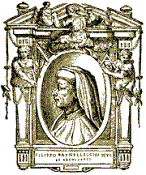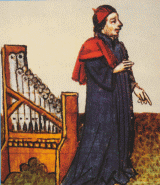Our Recording


 |
Dufay's stunning motet Nuper Rosarum Flores holds a particularly important place in the history of Florence. As its text relates, Dufays motet was composed for the consecration of Florence's great Cathedral, Santa Maria del Fiore, known colloquially as Il Duomo on the Feast of the Annunciation, 25 March 1436. With the completion of the great dome, Florence's skyline would change forever. To this day, it is uncertain how Brunelleschi actually physically created the dome, the largest of its kind. During the weeks leading up to the dedication Pope Eugenius, along with his retinue, was resident in the city. The esteem in which the cathedral was held was demonstrated by its being presented with a Golden Rose, a traditional gift made to an important figure in Christendom during Lent. The dedication ceremony was the highlight of the liturgical calendar. Presided over by the Pope, it feautred newly composed music performed by his Pope's special choir, the Schola Cantorum, of which Dufay himself was a member. Thousands attended; Giannozzo Manetti who was present, spoke of the music with masterful hyperbole: "such harmonies exalted even to heaven, that truly it was to the listener like angelic and divine melodies; the voices filled the listeners' ears with such a wonderful sweetness that they seemed to become stupefied, almost as men were fabled to become upon hearing the singing of the sirens. I could believe without impiety that even in Heaven, yearly on this most solemn day that marks the beginning of human salvation, the angels sing thus.... I was so possessed by ecstasy that I seemed to enjoy the life of the Blessed here on earth." Though it is not certain where in the Mass Dufay's motet was performed it clearly made great impact. Guillaume Dufay's life is difficult to ascertain. It is believed that he was born in Cambrai in Northern France and eventually made his way to Italy to sing in the Papal choir where he is placed in 1428. In the early years of the fifteenth century, Dufay became acquainted with the music of Dunstable and the English school and was the prime exponent of le contenance Anglais on the continent. Dufay became the last great composer of Motets. |

 |
Guillaume Dufay: Nuper Rosarum Flores (1436)
|
|
Nuper rosarum flores
Nuper rosarum flores Ex dono pontificis Hieme licet horrida Tibi, virgo coelica, Pie et sancte deditum Grandis templum machinae Condecorarunt perpetim. Hodie vicarius Jesu Christe et Petri Successor Eugenius Hoc idem amplissimum Sacris templum manibus Sanctisque liquoribus Consecrare dignatus est. Igitur, alma parens Nati tui et filia Virgo decus virginum, Tuus te Florentiae Devotus erat populus, Ut qui mente et corpore Mundo quicquam exorarit. Oratione tua Cruciatus et meritis Tui secundum carnem Nati Domini sui Grata beneficia Veniamque reatum Accipere meraeatur. Amen. Cantus Firmus Terribilis est locus iste |
Nuper rosarum flores
Recently garlands of roses were given by the Pope - despite a terrible winter - to you, heavenly Virgin, dedicated in a pious and holy fashion, a temple of great ingenuity, to be a perpetual adornment. Today the vicar of Jesus Christ and of Peter a successor, Eugenius, has to this vast temple with his hands and holy liquors deigned to consecrate. Therefore, sweet parent of your son, and daughter, virgin of virgins, to you the Florentines devoted as a people, together in mind and body on earth, pray to you. By your prayer to the crucified and worthy, your second flesh, their Lord, grant us benefit and receive pardons for their transgression. Amen. Cantus Firmus Magnificent is this place. |